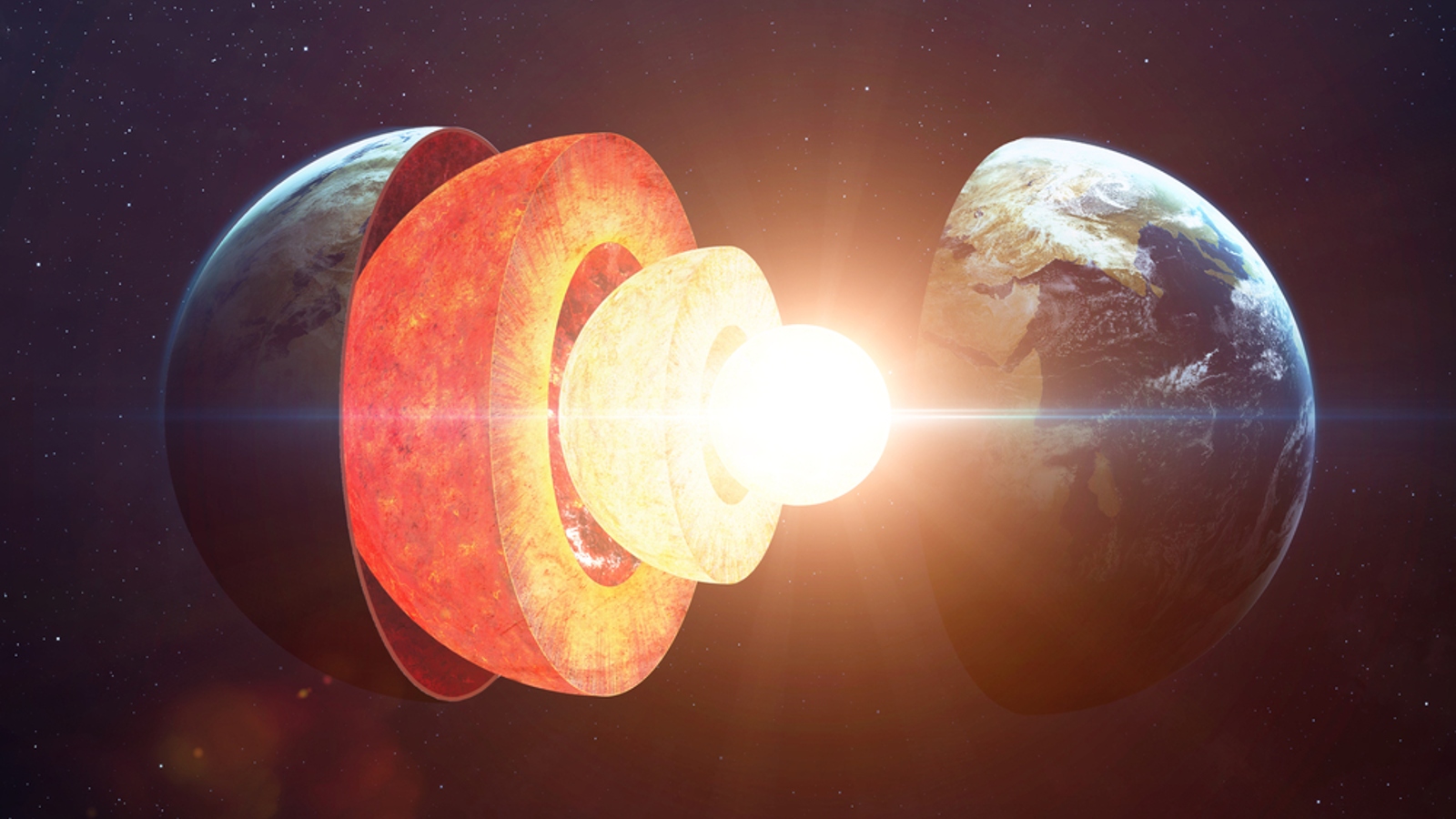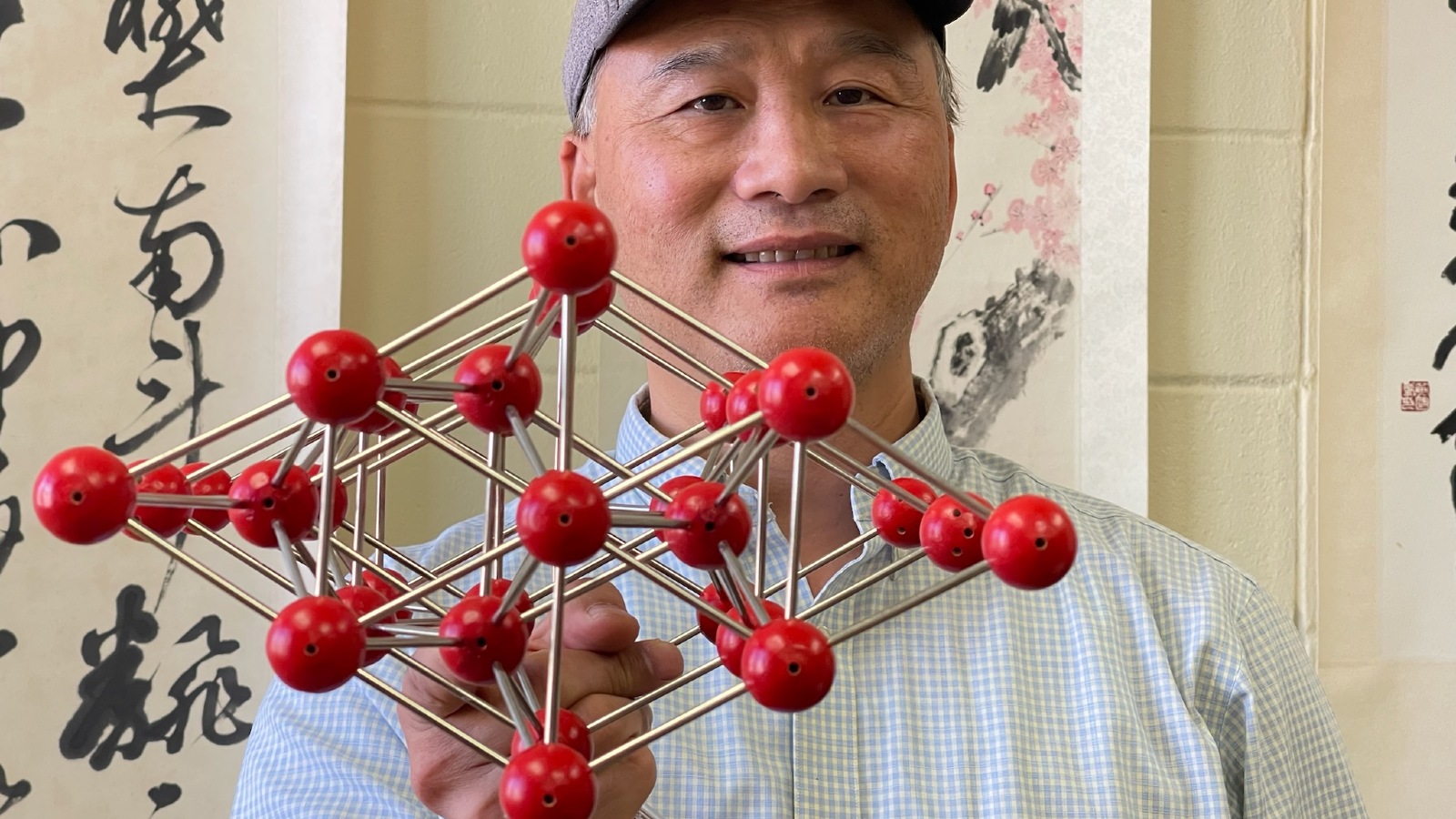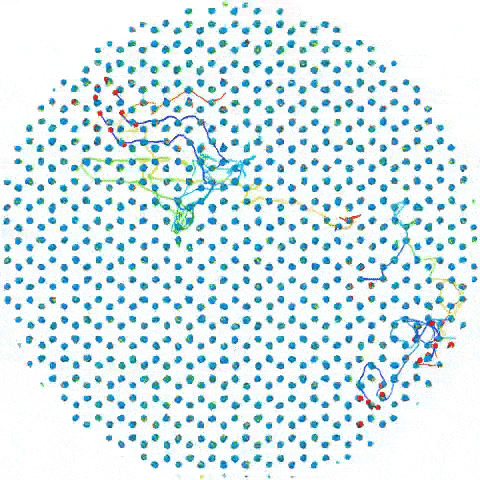Earth's solid inner core is 'surprisingly soft' thanks to hyperactive atoms jostling around
Atoms within the enormous ball of iron in Earth's inner core may move around much more than previously thought, which could explain recent findings about the core's surprising softness.
Scientists recently discovered that Earth's inner core, which was long thought to be an unmoving ball of solid metal, might be a lot less rigid than we expected. Now, a new study suggests this surprising softness may be caused by hyperactive atoms that move around within their molecular structure much more than we realized.
The inner core is a massive spherical lump of metal, predominantly iron, that spans roughly 760 miles (1,220 kilometers) and dates back to at least 1 billion years ago. The inner core is enveloped by the outer core — a sea of swirling liquid metals — that is in turn surrounded by a massive layer of molten rock, known as the mantle, which sits just below the solid crust we live on.
The pressure at the heart of our planet is immense, so experts initially believed the core must be completely solid and that the iron atoms within it, which are arranged in a massive hexagonal lattice, must be permanently held in place.
But in 2021, seismic waves from earthquakes revealed that there were lots of inconsistencies within the inner core, which led some scientists to describe it as a "mushy hidden world." Subsequent studies suggested this may be caused by swirls of liquid iron being trapped inside the core or that the core exists in a "superionic state," where atoms from other elements like carbon and hydrogen are constantly sloshing through the core's massive lattice of iron atoms.
Related: Earth's core is growing 'lopsided' and scientists don't know why
The new study, published Oct. 2 in the journal Earth, Atmospheric and Planetary Sciences, provides an alternative explanation for what is going on inside the inner core.
The researchers recreated the intense pressure within the inner core in the lab and observed how the iron atoms behaved under these conditions. The scientists then fed this data into a computer-learning program to create a simulated virtual core that they dubbed the "supercell." Using the supercell, the team was able to see how the iron atoms moved within their supposedly rigid structure.
Get the world’s most fascinating discoveries delivered straight to your inbox.
The results suggest the atoms inside the inner core can "move much more than we ever imagined," study co-author Jung-Fu Lin, a geophysicist at the University of Texas at Austin, said in a statement.
The supercell simulations show that some of these atoms can move around in groups, taking up other positions in the lattice without compromising its overall shape — kind of like how dinner guests change seats at a table without adding or removing chairs, researchers wrote in the statement. This type of movement is known as "collective motion."
"This increased movement makes the inner core less rigid [and] weaker against shear forces," Lin said. This could explain why the inner core is "surprisingly soft," he added.
The researchers believe that the new findings could also reveal new insights into other inner core mysteries, like how it helps to generate Earth's magnetic field.
"Now, we know about the fundamental mechanism that will help us with understanding the dynamic processes and evolution of the Earth's inner core," Lin said.

Harry is a U.K.-based senior staff writer at Live Science. He studied marine biology at the University of Exeter before training to become a journalist. He covers a wide range of topics including space exploration, planetary science, space weather, climate change, animal behavior and paleontology. His recent work on the solar maximum won "best space submission" at the 2024 Aerospace Media Awards and was shortlisted in the "top scoop" category at the NCTJ Awards for Excellence in 2023. He also writes Live Science's weekly Earth from space series.





